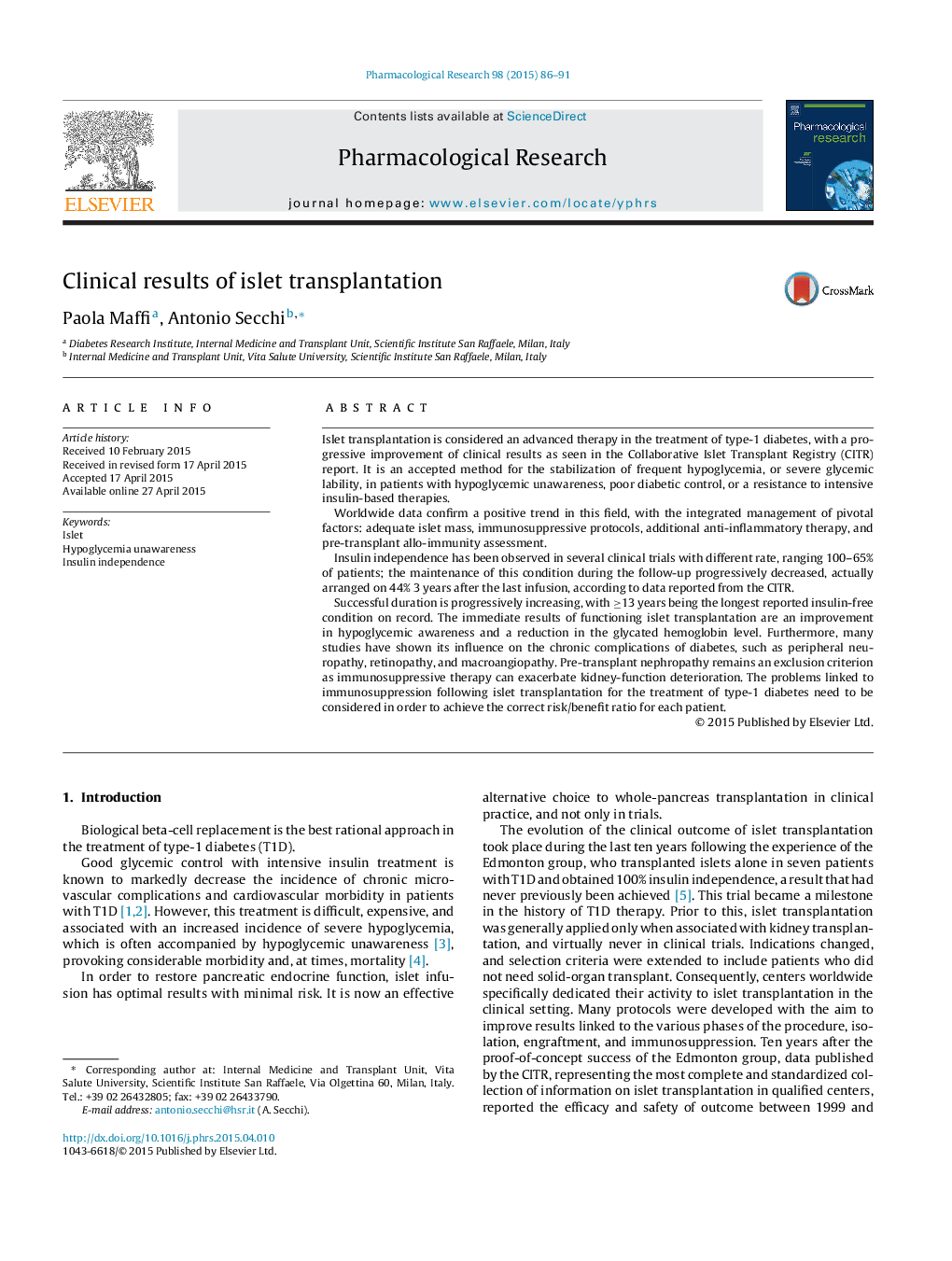| کد مقاله | کد نشریه | سال انتشار | مقاله انگلیسی | نسخه تمام متن |
|---|---|---|---|---|
| 2561907 | 1560842 | 2015 | 6 صفحه PDF | دانلود رایگان |
Islet transplantation is considered an advanced therapy in the treatment of type-1 diabetes, with a progressive improvement of clinical results as seen in the Collaborative Islet Transplant Registry (CITR) report. It is an accepted method for the stabilization of frequent hypoglycemia, or severe glycemic lability, in patients with hypoglycemic unawareness, poor diabetic control, or a resistance to intensive insulin-based therapies.Worldwide data confirm a positive trend in this field, with the integrated management of pivotal factors: adequate islet mass, immunosuppressive protocols, additional anti-inflammatory therapy, and pre-transplant allo-immunity assessment.Insulin independence has been observed in several clinical trials with different rate, ranging 100–65% of patients; the maintenance of this condition during the follow-up progressively decreased, actually arranged on 44% 3 years after the last infusion, according to data reported from the CITR.Successful duration is progressively increasing, with ≥13 years being the longest reported insulin-free condition on record. The immediate results of functioning islet transplantation are an improvement in hypoglycemic awareness and a reduction in the glycated hemoglobin level. Furthermore, many studies have shown its influence on the chronic complications of diabetes, such as peripheral neuropathy, retinopathy, and macroangiopathy. Pre-transplant nephropathy remains an exclusion criterion as immunosuppressive therapy can exacerbate kidney-function deterioration. The problems linked to immunosuppression following islet transplantation for the treatment of type-1 diabetes need to be considered in order to achieve the correct risk/benefit ratio for each patient.
Figure optionsDownload high-quality image (59 K)Download as PowerPoint slide
Journal: Pharmacological Research - Volume 98, August 2015, Pages 86–91
